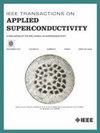利用单通量量子电路实现超导神经形态计算
IF 1.7
3区 物理与天体物理
Q3 ENGINEERING, ELECTRICAL & ELECTRONIC
引用次数: 0
摘要
由于规模和复杂性的增加,当前的人工智能在提高计算效率方面面临挑战。超导电路作为后摩尔时代最有前途的技术之一,具有超高速计算和超低功耗的特点。超导电路由脉冲驱动,这使得直接执行基于脉冲的神经形态计算成为可能。因此,超导电路具有促进更高效率和更大规模神经形态芯片的潜力。然而,现有的努力忽视了超导电路的局限性和约束,例如脉冲逻辑的额外开销,缺乏超导存储器,以及低集成度。因此,他们的工作不能用于制造真正的超导神经形态芯片。本文介绍了超导尖峰神经网络(SSNN),其目的是在超导电路上实现全神经形态计算。SSNN的设计解决了基于超导电路的神经元模型、适用于超导脉冲的权值处理方法以及超导神经形态片上网络等关键问题。SSNN在超导电路上实现了完全的神经形态计算。我们使用超导电路标准细胞库验证了SSNN的可行性和准确性,并成功制造了世界上第一个超导神经形态芯片。我们的评估显示,与最先进的半导体设计相比,功率效率显著提高了50倍。本文章由计算机程序翻译,如有差异,请以英文原文为准。
Toward Superconducting Neuromorphic Computing Using Single-Flux-Quantum Circuits
Current artificial intelligence faces challenges in improving computational efficiency due to increasing scale and complexity. Superconducting circuit, as one of the most promising technologies in the post-Moore era, offers ultrahigh-speed computation and ultralow power consumption. Superconducting circuits are driven by pulses, which enables direct execution of pulse-based neuromorphic computing. Consequently, superconducting circuits hold the potential to facilitate higher efficiency and larger scale neuromorphic chips. However, existing efforts neglect the limitations and constraints of superconducting circuits, such as the extra overhead of pulse-based logic, the lack of superconducting memory, and low integration. Hence, their work cannot be utilized in fabricating real superconducting neuromorphic chips. This article introduces superconducting spiking neural network (SSNN), which aims to enable full neuromorphic computing on superconducting circuits. The design of SSNN addresses key issues including a superconducting circuit-based neuron model, weight processing methods suitable for superconducting pulses, and superconducting neuromorphic on-chip networks. SSNN enables complete neuromorphic computing on superconducting circuits. We validate the feasibility and accuracy of SSNN using a standard cell library of superconducting circuits and successfully fabricate the world's first superconducting neuromorphic chip. Our evaluation demonstrates a remarkable $50\times$ increase in power efficiency compared to state-of-the-art semiconductor designs.
求助全文
通过发布文献求助,成功后即可免费获取论文全文。
去求助
来源期刊

IEEE Transactions on Applied Superconductivity
工程技术-工程:电子与电气
CiteScore
3.50
自引率
33.30%
发文量
650
审稿时长
2.3 months
期刊介绍:
IEEE Transactions on Applied Superconductivity (TAS) contains articles on the applications of superconductivity and other relevant technology. Electronic applications include analog and digital circuits employing thin films and active devices such as Josephson junctions. Large scale applications include magnets for power applications such as motors and generators, for magnetic resonance, for accelerators, and cable applications such as power transmission.
 求助内容:
求助内容: 应助结果提醒方式:
应助结果提醒方式:


